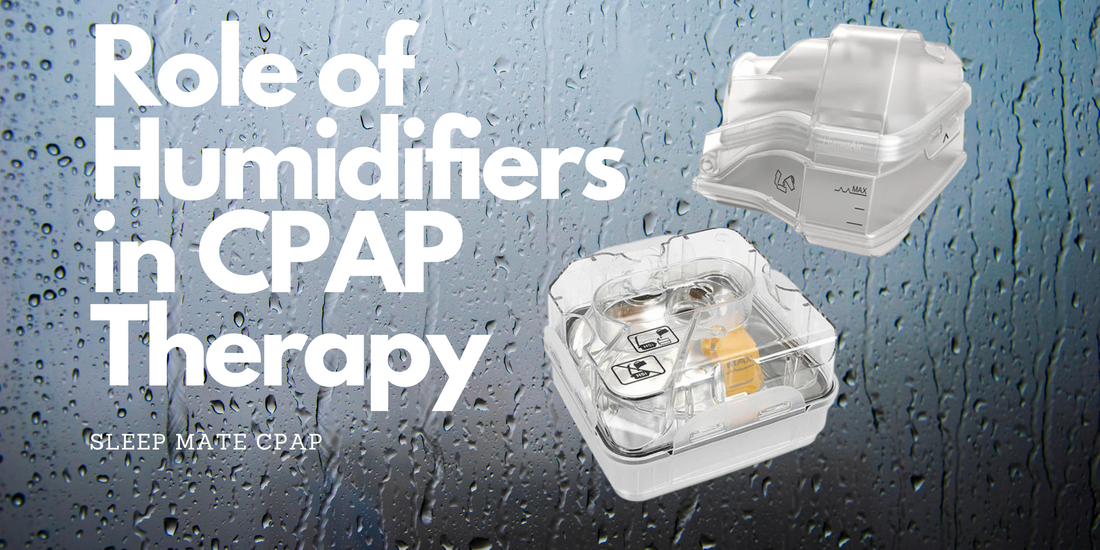
The Role of Humidifiers in CPAP Therapy: Benefits, Maintenance, and Key Considerations
Continuous Positive Airway Pressure (CPAP) therapy is a highly effective treatment for sleep apnea, offering relief from disrupted sleep and related health complications. A key element that enhances this therapy is the use of a humidifier. Humidifiers in CPAP therapy play a vital role in ensuring comfort, improving compliance, and preventing common side effects like dryness and irritation. This comprehensive guide delves into the benefits, maintenance, and best practices for integrating humidifiers into your CPAP therapy.
What Are Humidifiers?
A humidifier is a device that adds moisture to the air delivered by your CPAP machine. By preventing dryness in your nasal passages and throat, humidifiers make CPAP therapy more comfortable and effective. There are two main types of humidifiers used in CPAP therapy:
-
Heated Humidifiers: These use heat to warm water, producing moist air that feels warmer and more soothing—ideal for colder climates or dry environments.
-
Passover (Unheated) Humidifiers: These rely on airflow passing over room-temperature water to add moisture without heat.
Both options help alleviate discomfort and improve the overall CPAP experience.
Benefits:
-
Reduces Dryness and Irritation: One of the most common issues new CPAP users face is dryness in the nasal passages, throat, or mouth. Humidifiers add much-needed moisture to the air, alleviating these symptoms.
-
Improves Comfort: Furthermore, warm, humidified air enhances comfort, especially during colder months or in regions with low humidity. Comfortable therapy increases the likelihood of long-term adherence.
-
Prevents Nasal Congestion: Similarly, dry air can cause nasal congestion or exacerbate sinus issues. The added moisture keeps your nasal passages hydrated and clear.
-
Enhances Therapy Compliance: Many patients abandon CPAP therapy due to discomfort. Humidifiers improve the experience, ensuring users stick to their treatment plan.
Addressing Common Challenges with Humidifiers in CPAP Therapy
While humidifiers provide many benefits, users may encounter some challenges. Here’s how to address them:
-
Rainout (Condensation in Tubing): When warm, humid air cools in the CPAP tubing, it can condense into water droplets. To prevent rainout, consider using a heated CPAP hose or insulating your tubing.
-
Maintenance Requirements: Additionally, regular cleaning is crucial to prevent the growth of mold, bacteria, and mineral buildup. Ensure you clean your humidifier chamber daily and perform deep cleaning weekly.
-
Water Quality: Always use distilled water in your humidifier to avoid mineral deposits that can damage the equipment and affect air quality.
How to Maintain Humidifiers in CPAP Therapy
Proper maintenance ensures your humidifier functions optimally and lasts longer. Follow these tips for upkeep:
-
Daily Cleaning: Empty and rinse the humidifier chamber with warm water every morning to prevent bacteria growth.
-
Weekly Deep Cleaning: Wash the humidifier chamber with mild soap and warm water. Rinse thoroughly and let it air-dry completely before use.
-
Monthly Descaling: Use a vinegar solution (1 part vinegar to 3 parts water) to soak the chamber for 30 minutes. This removes any mineral deposits. Rinse thoroughly afterward.
-
Inspect for Damage: Regularly check for cracks or wear in the chamber. Replace damaged parts immediately to maintain optimal performance.
Tips for Using Humidifiers
-
Adjust the humidifier settings to suit your comfort level. Many CPAP machines allow you to control the humidity level.
-
Ensure your bedroom temperature aligns with the humidifier’s function to prevent condensation.
-
Replace the humidifier chamber as recommended by the manufacturer or your healthcare provider.
Why Humidifiers in CPAP Therapy Are Essential for Comfort and Health
In CPAP therapy, comfort plays a pivotal role in ensuring long-term compliance. Humidifiers not only enhance comfort but also address side effects like dryness and congestion that can hinder effective therapy. Adding a humidifier can transform your CPAP experience, making it more enjoyable and sustainable.
Recommended Products for Humidifiers in CPAP Therapy
At Sleep Mate CPAP we offer a range of CPAP machines and accessories designed to improve your therapy experience. Explore our selection of humidifiers and related products:
-
ResMed AirSense 11 with HumidAir: A top choice for seamless integration of therapy and humidification.
- Resmed humidifers tubs are also avaliable for each machine; Resmed Airsense 10 humidifier tub. Resmed Airsense 11 humidier tub.
-
Fisher & Paykel SleepStyle+ CPAP with Built-in Humidifier: A compact option with advanced humidification technology.
Visit our humidifier product page to find the perfect humidifier for your CPAP machine.
Conclusion
Incorporating a humidifier into your CPAP therapy is a game-changer for comfort and effectiveness. By understanding the benefits, addressing potential challenges, and maintaining your equipment, you can make the most of your therapy. Moreover, at SleepMate CPAP, we’re committed to helping you achieve better sleep with the right tools and support.
For more information or to explore our range of CPAP products, visit SleepMate CPAP today
References:

